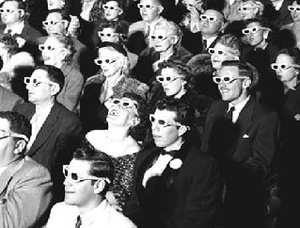 3D technology was the biggest new trend of the 2010 CES event, and the creation of new glasses and digital 3D has certainly made the experience a more enjoyable one. Despite the advances, prominent eye experts has said that 3D tech may still lead to headaches for many users, and they should have their eyes checked first before investing in 3D HDTVs or other tech.
3D technology was the biggest new trend of the 2010 CES event, and the creation of new glasses and digital 3D has certainly made the experience a more enjoyable one. Despite the advances, prominent eye experts has said that 3D tech may still lead to headaches for many users, and they should have their eyes checked first before investing in 3D HDTVs or other tech.
Normally, each eye will see things at a different angle.
"When that gets processed in the brain, that creates the perception of depth," adds Dr. Deborah Friedman, a professor of ophthalmology and neurology at the University of Rochester Medical Center in New York. "The illusions that you see in three dimensions in the movies is not exactly calibrated the same way that your eyes and your brain are. If your eyes are a little off to begin with, then it's really throwing a whole degree of effort that your brain now needs to exert. This disparity for some people will give them a headache."
Dr. John Hagan, a fellow with the American Academy of Ophthalmology adds that anyone with a lack of depth perception or eye muscle issues may not be able to see 3D images at all, or will have trouble processing the images.
Rick Heinemen, of 3D theater equipment provider RealD, says digital technology has solved most of 3D's former problems, notably headaches and nausea. Older 3D tech used two film projectors, one for each eye. If they weren't lined up properly, the image would cause headaches. With digital there is only one projector.













